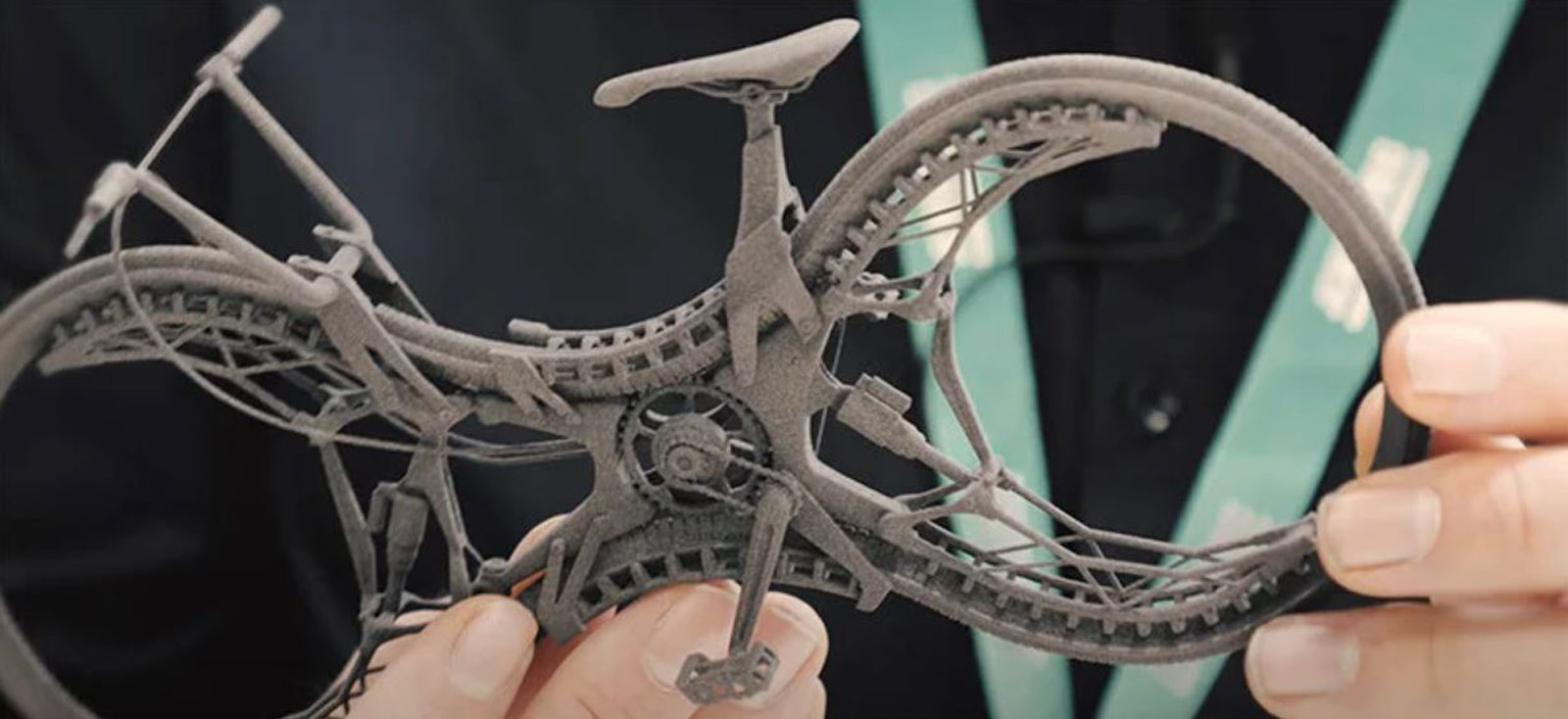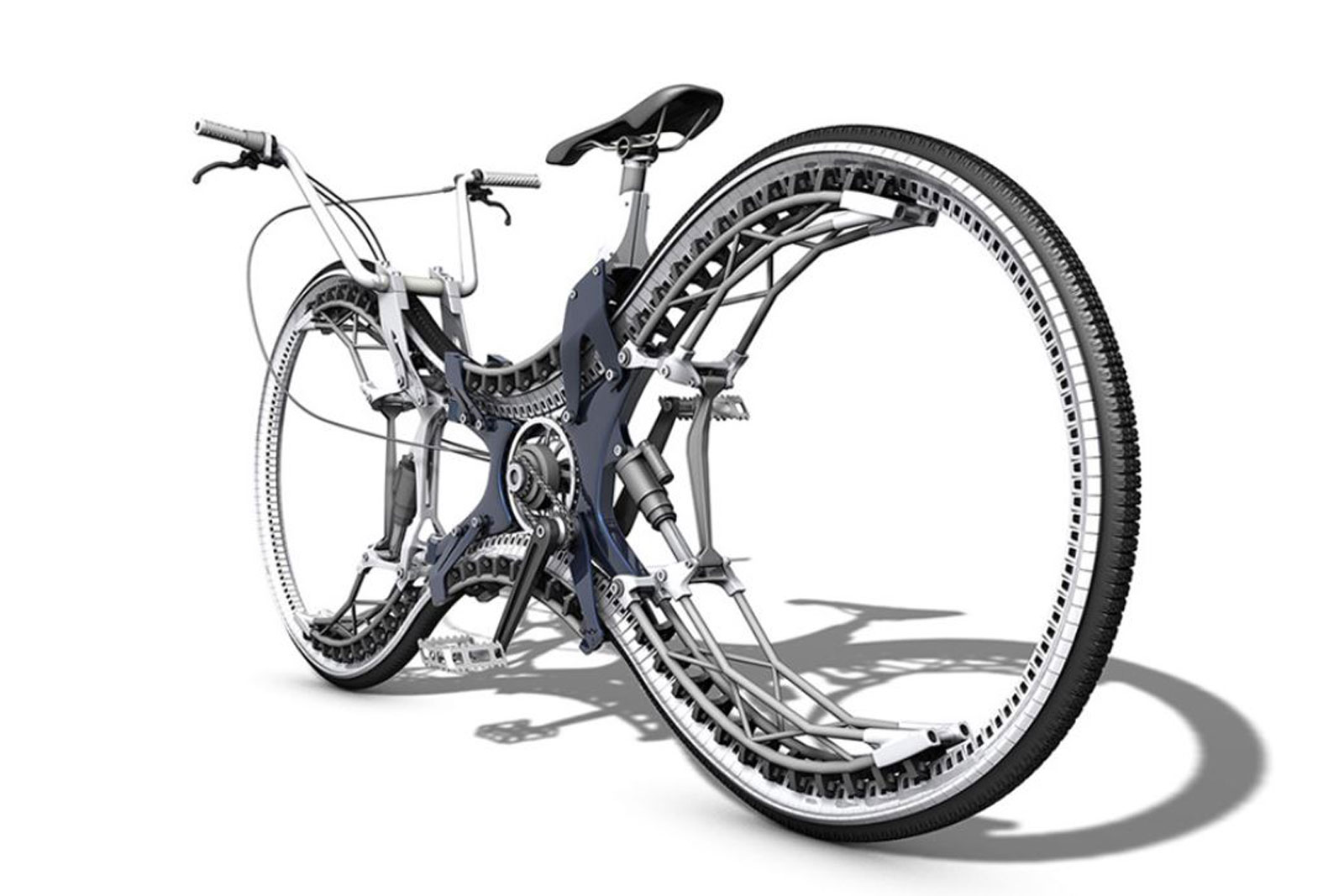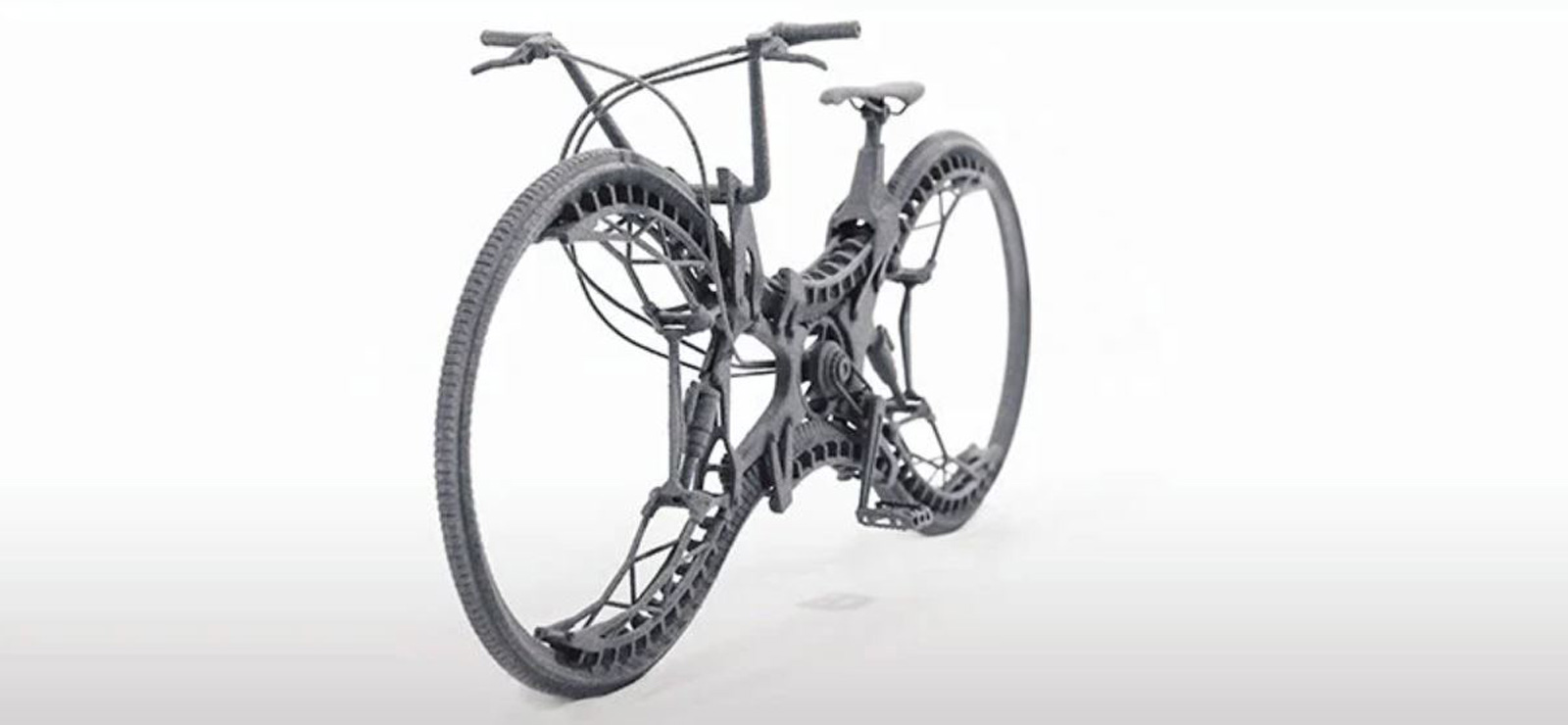The Infinity Bike isn’t yet a rideable bicycle, existing only as a 3D Printed model, and of course inside the mind of its creator, Stephan Henrich. Considered by many as the pioneer of additive design, Stephan has introduced to the world an all-wheel drive concept in the form of a beach and city cruiser. It centers around what Stephan terms a “continuous structural element”.
Infinity Bike Concept
“The infinity beach and city cruiser is driven by a revolutionary monotyre clip chain construction that automatically forms a temporary rim in the wheel area and a dented belt-drive in the interior area. This monotyre is propulsed by a central wheel getting its force by a crank over a short chain and an 8-speed gearbox,’ explains Stephan Henrich.
Stephan says he is yet to come across “any killer argument” that would present this design becoming a reality – an actual rideable bicycle, conceding only that it would require a lot of investment. But, it seems he is convinced it could one day become a sell-able product.
A central chain wheel, driven by an offset bottom bracket, if you will, drives the “tooth bed” at the interior of the rim area. A centrally positioned, fixed “frame” houses the chain wheel, with four linkage arms extending off this – two fore, and two aft. These provide support for the belt drive, given the name “tyre guide rails”.

I have a number of questions, the most pressing of which is, how on earth does it steer? Seems to me the design would prevent the front portion of what is essentially a unicycle, from moving independently to its rear portion.
Stephan also imagines the Infinity Bike to have front and rear suspension, as demonstrated by the shock absorbers positioned. Each shock looks to be driven by the lower “swingarm”, which doubles up as a tyre guide rail to give the belt drive its structure. I’m no engineer, but it seems this element would be more implementable than a steering element, requiring the drive belt to deform only in the vertical plane. I shan’t hypothesize as to how the “front” and “rear” brakes work.
What are you thoughts on this? Could it be engineered into a rideable bicycle? How much travel should it have? Should it be an eBike? Should it have a kickstand? Rear rack? Dropper seat post? Have at it in the comments.


